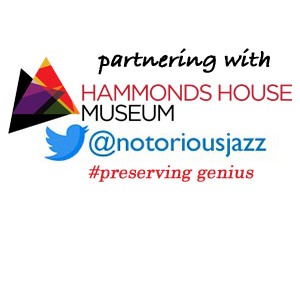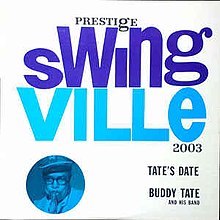
Daily Dose Of Jazz…
Eli Robinson was born on June 23, 1908 in Greenville, Georgia. After working in Cincinnati, Ohio in bands led by Speed Webb, Zack Whyte and also worked with McKinney’s Cotton Pickers. In 1935 he made his first recordings with Blanche Calloway.
1936 saw Eli moving to New York City, where he became a member of the Teddy Hill and Willie Bryant big bands and the Mills Blue Rhythm Band. Three years later he played with Roy Eldridge and joined the big band of Lucky Millinder.
Beginning in 1941, he spent several years as a member of the Count Basie Orchestra. He returned to working with Millinder, then joined Buddy Tate in 1954.
Trombonist and arranger Eli Robinson never recorded as a leader, and passed away on December 24, 1972 in New York City.
More Posts: arranger,history,instrumental,jazz,music,trombone
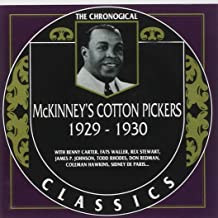
Daily Dose Of Jazz…
Edward Emerson Cuffee was born on June 7, 1902 in Norfolk, Virginia. He moved to New York in the 1920s, where he recorded with Clarence Williams from 1927 to 1929 and played with Bingie Madison.
Playing in McKinney’s Cotton Pickers from 1929 to 1934, he moved to Fletcher Henderson’s band for three years beginning in 1935. Ed went on to play with Leon Abbey in 1940 and subsequently through the decade with Count Basie, Chris Columbus and Bunk Johnson.
He quit playing professionally after the late 1940s. Trombonist Ed Cuffee passed away on January 3, 1959 in New York City.
More Posts: history,instrumental,jazz,music,trombone
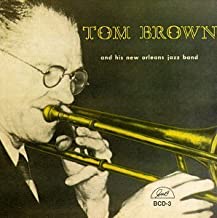
Daily Dose Of Jazz…
Tom Brown was born in Uptown New Orleans, Louisiana on June 3, 1888. He played trombone with the bands of Papa Jack Laine and Frank Christian, and by 1910 he was usually working with leading bands under his own name. The band played in a style then locally known as “hot ragtime” or “ratty music”. In early 1915, his band was heard by Vaudeville dancer Joe Frisco who then arranged a job for Brown’s band in Chicago, Illinois.
Tom Brown’s Band from Dixieland opened up at Lamb’s Cafe in Chicago, this band seems to be the first to be popularly referred to as playing Jass. The term jass, at that time, had a sexual connotation, which drew more people to come to hear the band out of curiosity. Realizing the publicity potential he started calling his group Brown’s Jass Band.
Heading to Chicago, Illinois he enjoyed over four months of success there before moving to New York City, where they played for an additional four months more prior to returning to New Orleans in 1916. Once home, Tom immediately put together another band with Larry Shields, Alcide Nunez, and Ragbaby Stevens, then went to work for Bert Kelly in New York City, replacing the Original Dixieland Jass Band at Reisenweber in 1918. He started doing freelance recording work with New York dance and novelty bands, then joined the band of Harry Yerkes.
Brown also played the Vaudeville circuit in the acts of Joe Frisco and Ed Wynn. Late 1921 he returned to Chicago and joined Ray Miller’s Black & White Melody Boys, with whom he made more recordings. During this period he also co-lead a dance band with his brother Steve. Back in New Orleans he played with Johnny Bayersdorffer and Norman Brownlee’s bands, making a few excellent recordings.
During the Great Depression he supplemented his income from music by repairing radios. He opened up a music shop and a junk shop on Magazine Street. He played string bass in local swing and dance bands. With the revival of interest in traditional jazz he played in various Dixieland bands in the 1950s. Making his last recording just weeks before his death, his trombone playing apparently did not suffer from the fact that he had neither teeth or dentures at the time. Trombonist Tom Brown, who also played string bass, passed away in New Orleans on March 25, 1958.
More Posts: bandleader,history,instrumental,jazz,string bass,trombone
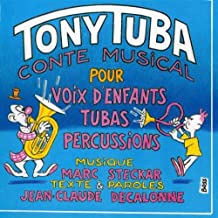
Daily Dose Of Jazz…
Marc Steckar was born on June 1, 1935 in Cherbourg, France. He began learning the cello from age eight, then played the trumpet. During his studies at the Paris National Conservatory, he switched to the trombone in 1953, which he studied with André Lafosse. After an interruption due to his military service in the Algerian War, he completed his training and in 1959 he received the second prize for trombone.
In the next few years he worked in the big band of Benny Bennet, in the Aimé Barelli orchestra in the Monte Carlo casinos and in Olympia where he played Marlene Dietrich and Nat King Cole, with whom he toured Europe. He played in the orchestra of Paul Mauriat accompanying Charles Aznavour, then in the big band of Daniel Janin who played behind Édith Piaf, Jacques Brel, Gilbert Bécaud and Sammy Davis Jr. in 1961.
Over the next few years he worked as a studio musician, among others for Michel Legrand , Vladimir Cosma and for various television shows, but also again at the Olympia for Roland Petit and Zizi Jeanmaire. Between 1973 and 1983, Marc accompanied Claude Nougaro with Eddy Louiss and Maurice Vander before becoming a member of Martial Solal’s big band. He recorded film music with Vander.
He went on to form Steckar TUBAPACK, and the Elephant Tuba Horde Big Band. Steckar is also on albums by François Jeanneau, Illinois Jacquet and Sonny Rhodes. Tubist Marc Stekar, who played trombone, bass trombone, euphonium, and was a composer, passed away on June 27, 2015 in Bessancourt, Val-d’Oise, France.
More Posts: bandleader,composer,euphonium,history,instrumental,jazz,music,trombone,tuba
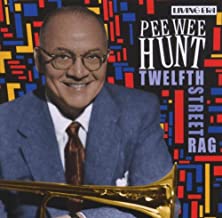
Daily Dose Of Jazz…
Pee Wee Hunt was born Walter Gerhardt Hunt on May 10, 1907 in Mount Healthy, Ohio. He developed a musical interest at an early age, as his mother played the banjo and his father played violin. As a teenager he was a banjoist with a local band while he was attending college at Ohio State University where he majored in electrical engineering. During his college years he switched from banjo to trombone, and graduated from the Cincinnati Conservatory of Music. He joined Jean Goldkette’s Orchestra in 1928.
Hunt was the co-founder and featured trombonist with the Casa Loma Orchestra, but he left the group in 1943 to work as a Hollywood radio disc jockey before joining the Merchant Marine near the end of World War II. Returning to the West Coast music scene in 1946, his Twelfth Street Rag was a three million-selling, number one hit in 1948. His second million-selling disc was Oh! in 1953. He was satirized as Pee Wee Runt and his All-Flea Dixieland Band in Tex Avery’s animated MGM cartoon Dixieland Droopy in 1954.
Trombonist, vocalist and bandleader Pee Wee Hunt passed away on June 22, 1979 at age 72 after a long illness in Plymouth, Massachusetts
More Posts: bandleader,history,instrumental,jazz,music,trombone,vocal


